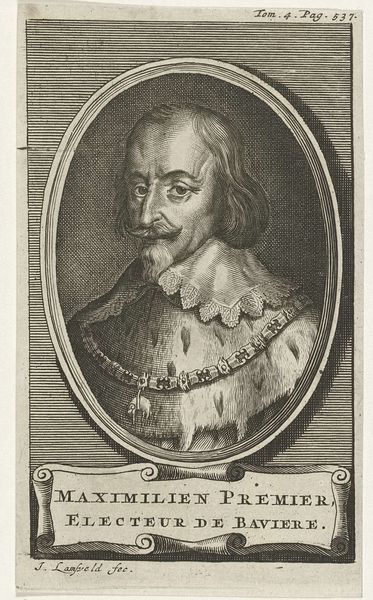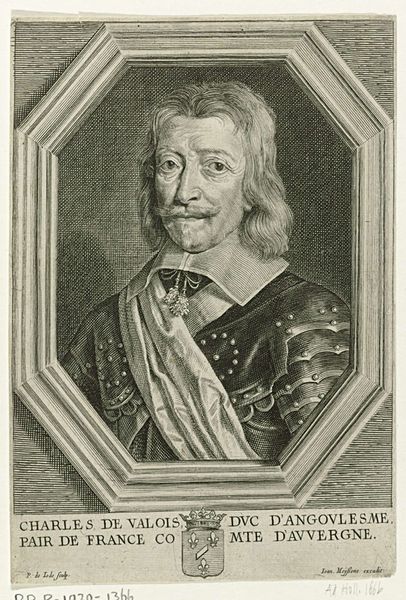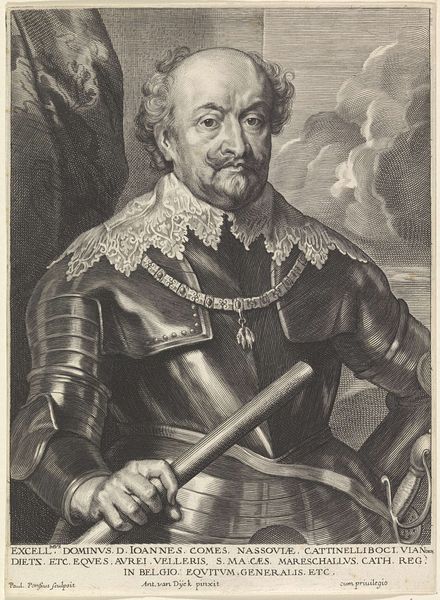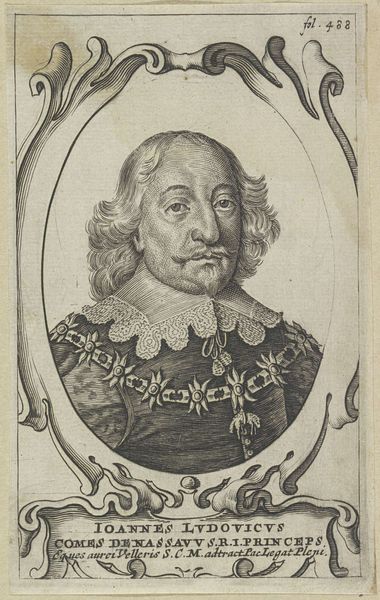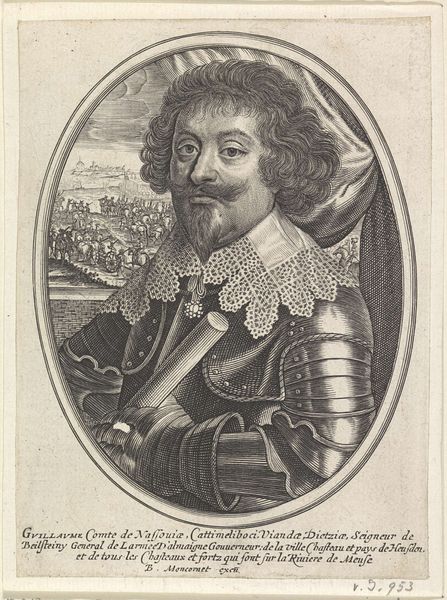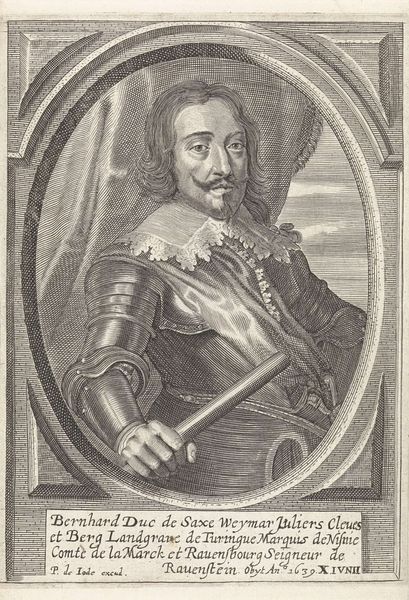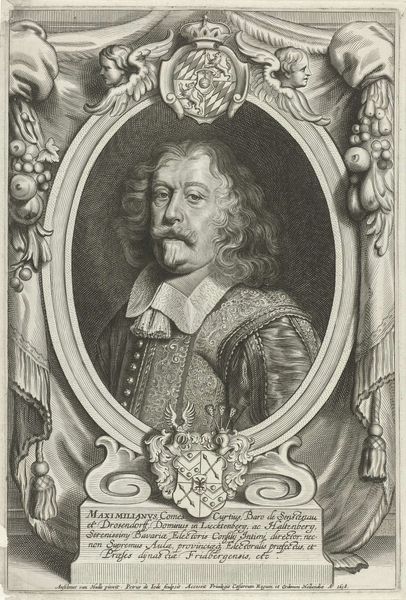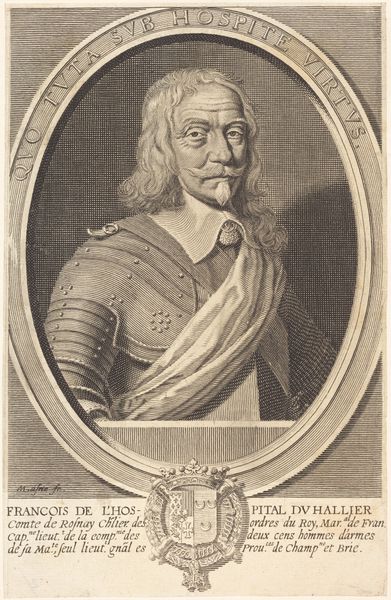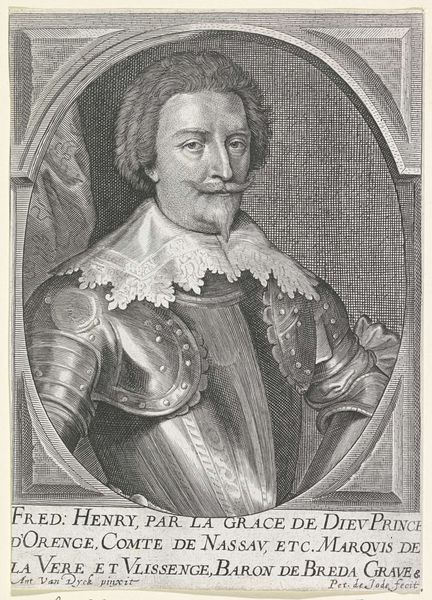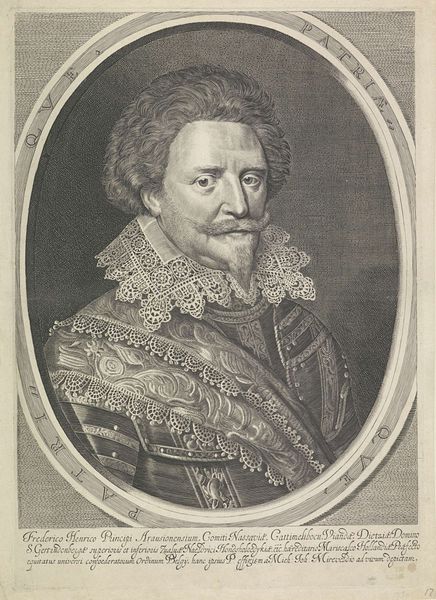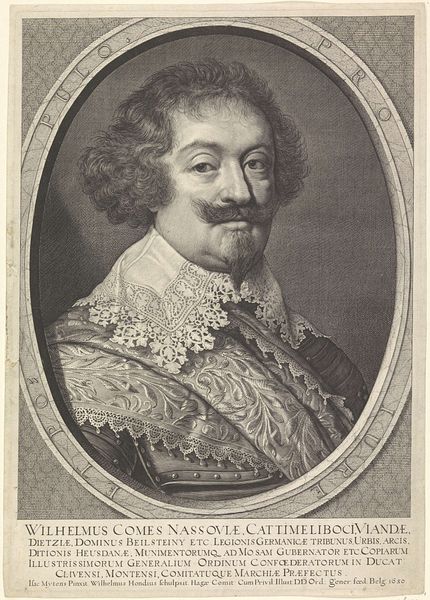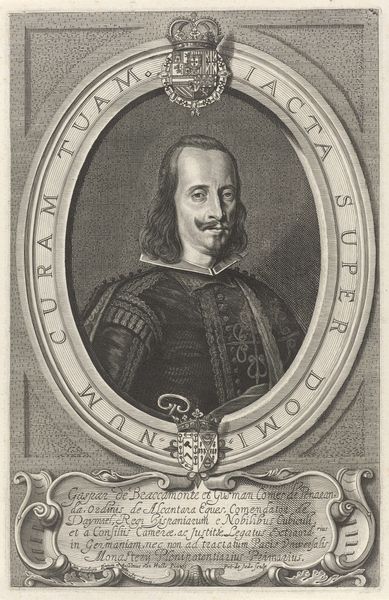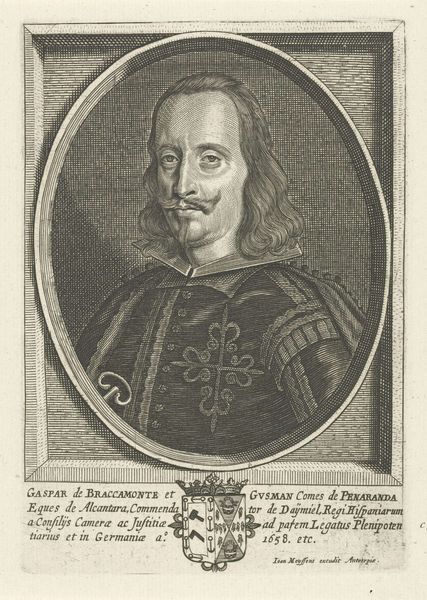
print, engraving
#
portrait
#
baroque
# print
#
old engraving style
#
portrait reference
#
geometric
#
line
#
portrait drawing
#
history-painting
#
engraving
Dimensions: height 175 mm, width 114 mm
Copyright: Rijks Museum: Open Domain
Editor: So, here we have a print titled "Portret van Hendrik Willem van Starhemberg-Schaunberg" created sometime between 1628 and 1670 by Pieter de Jode II. It’s currently held at the Rijksmuseum. What strikes me is the sheer formality; the detail achieved with just lines is incredible. What do you see in this piece? Curator: Beyond the impressive detail, I see a visual representation of power structures inherent in 17th-century European society. This portrait is not simply an image of a man; it's a careful construction of identity designed to project authority and nobility. The Latin inscriptions, the heraldic symbols – they all contribute to a carefully curated image of aristocratic dominance. What does that say to you about access and privilege in art during this era? Editor: It seems pretty exclusionary, doesn’t it? Art primarily served the interests of the wealthy and powerful. I mean, the average person wouldn't have had access to portraits like these. Curator: Precisely. Consider how the print medium itself, while more accessible than a painted portrait, still circulated primarily within educated and elite circles. How might this limitation have shaped public perception of figures like Hendrik Willem van Starhemberg-Schaunberg and, more broadly, sustained existing social hierarchies? Editor: So, the portrait functions almost as a piece of propaganda? Reinforcing existing power dynamics and restricting visibility? Curator: Indeed. Think about the way portraits have been traditionally employed, as tools to not only commemorate individuals, but to codify specific ideals tied to gender, class, and race. These visual cues play a critical role in defining who belongs and who is excluded. Editor: I guess I hadn't thought about it that way, as actively maintaining a certain social order. That’s a very different perspective than just seeing it as a historical document. Curator: Understanding art as active participation in shaping social reality makes all the difference. Considering art's function, it seems important to approach these types of portraits using a broader perspective that explores themes of power, social status, and identity.
Comments
No comments
Be the first to comment and join the conversation on the ultimate creative platform.
